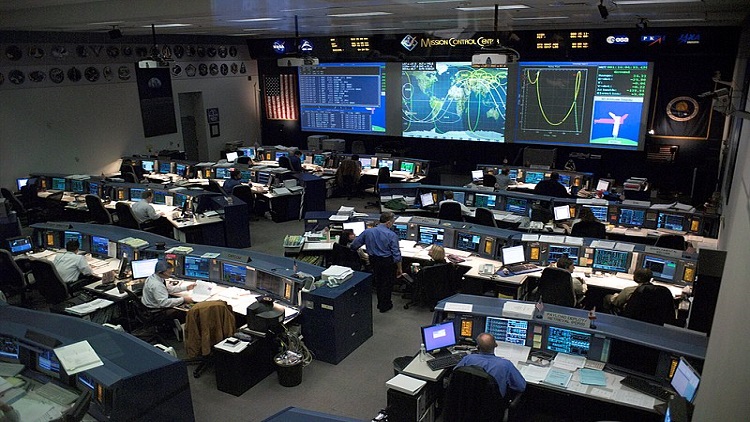Questions about hardware have traditionally led the commercial AV discussion. While hardware specs are critical elements of any system design and deployment, end users are mostly interested with the usability of an AV system and the functions it does or doesn’t provide. Most drivers don’t think about how vehicular fuel injection and throttles work; they simply want to go faster, so they press their accelerator pedals down. Easy, right?
During the past few years, industry stakeholders have begun to flip the script of "hardware first." Conducting a user needs analysis is a basic perquisite before AV planning can begin, but taking it a step further, focusing on the holistic UX can provide new insight on how systems can be more efficiently deployed. Tech managers are increasingly evaluating AV in their organizations vis-à-vis UX, encouraging integrators and vendors along the same path. This paradigm shift, coupled with the availability of software-centric systems and shrinking margins for hardware, are making the AV-as-a-Service (AVaaS) model viable.
Return to the car analogy to help frame AVaaS in relation to the agile control room: what do control room users need or want to do with the system? From a more practical and business perspective, “AvaaS is moving cost from a capital expense model to an operational expense model,” says Matthew Ezold, principal consultant for Cerami. “With some thought, the final user experience should be able to be maintained in either a traditional format or as a service. This gives our clients a lot of options to help fund and amortize their audiovisual costs. It also better aligns the audiovisual procurement process with the larger technology buys our clients are making.”
As with any shift, embracing AVaaS does not need to be sweeping or total. Many aspects of a professional AV environment will always need hardware. In a control room, for example, high-resolution and UHD displays, and their respective cabling, are required. With the rise of gesture control and voice control, the physical hardware for interfaces may become obsolete. Even with a physical interface, the rest of the functions of the control room may not require several fully loaded equipment racks in closets of dedicated hardware. If a few standard servers can do all the work, with purpose-built software, the business model can shift, allowing for more creative and experiential designs. Furthermore, if some of those software functions can be housed in the cloud, and the hardware burden diminishes even further.
This is not a death knell for hardware. There are countless cases for dedicated hardware with custom setups. Even standardization across a campus calls for integrated hardware and AV endpoints. But as AVaaS becomes more available and the options increase, technology managers have more tools to optimize the AV experience according to the needs of their organizations. For some managers, AVaaS might simply afford more flexibility in how expenses are viewed by organizational stakeholders. For other managers, the AVaaS approach could inspire a profound reimagining into what “AV” really is or what could be in the future.
For IT and AV managers exploring AVaaS in their facilities, Ezold offers realistic advice. “Price out the service costs for at least two to three years, and be clear on how services scale as needs grow,” he said. "Take into account and plan for the security of all data and externally hosted devices. Finally, pay closer attention to the track record of your service provider than you might have done with an integrator. Shifting AVaaS providers is harder than shifting integrators.”
Taking this kind of approach to AVaaS and considering when dedicated hardware is or is not essential can opens up the flexibility to deploy an AV system that fits the organizational needs as a business. Above and beyond that is the focus on what the people using the technology really need to do. Ultimately, their experience must remain consistent across systems or facilities within the organization. The inner-workings of how that is accomplished, however, can be as varied as is advantageous.
Similarly, managed services are not a new concept in IT applications. An increasing number of providers are extending their managed services to include AV functions. Whether the AV is included in other managed services or is handled by a dedicated provider, taking a balanced approach to the combination of service and dedicated hardware may be a good starting point. The most essential concern should always be the users of the technology and how AV can help meet their needs. If the best way to deploy that is with an integrated hardware solution, a full set of managed AV services, or a hybrid of both, needs-based design and decision making will help ensure an effective system.
AVaaS Offerings & Services to Consider Mechdyne AV Managed Services
https://www.mechdyne.com/managed-services.aspx
Netrix AVaaS
https://netrixllc.com/landing-pages/avaas
Net-AV AV as a Service
https://www.net-av.com/av-as-a-service
Principal One AV Managed Services
https://www.principleone.com/av-managed-services/
RGB Spectrum's Design Services
https://www.rgb.com/design-services
Utelogy AVaaS Portal
https://www.utelogy.com/avasaservice/










